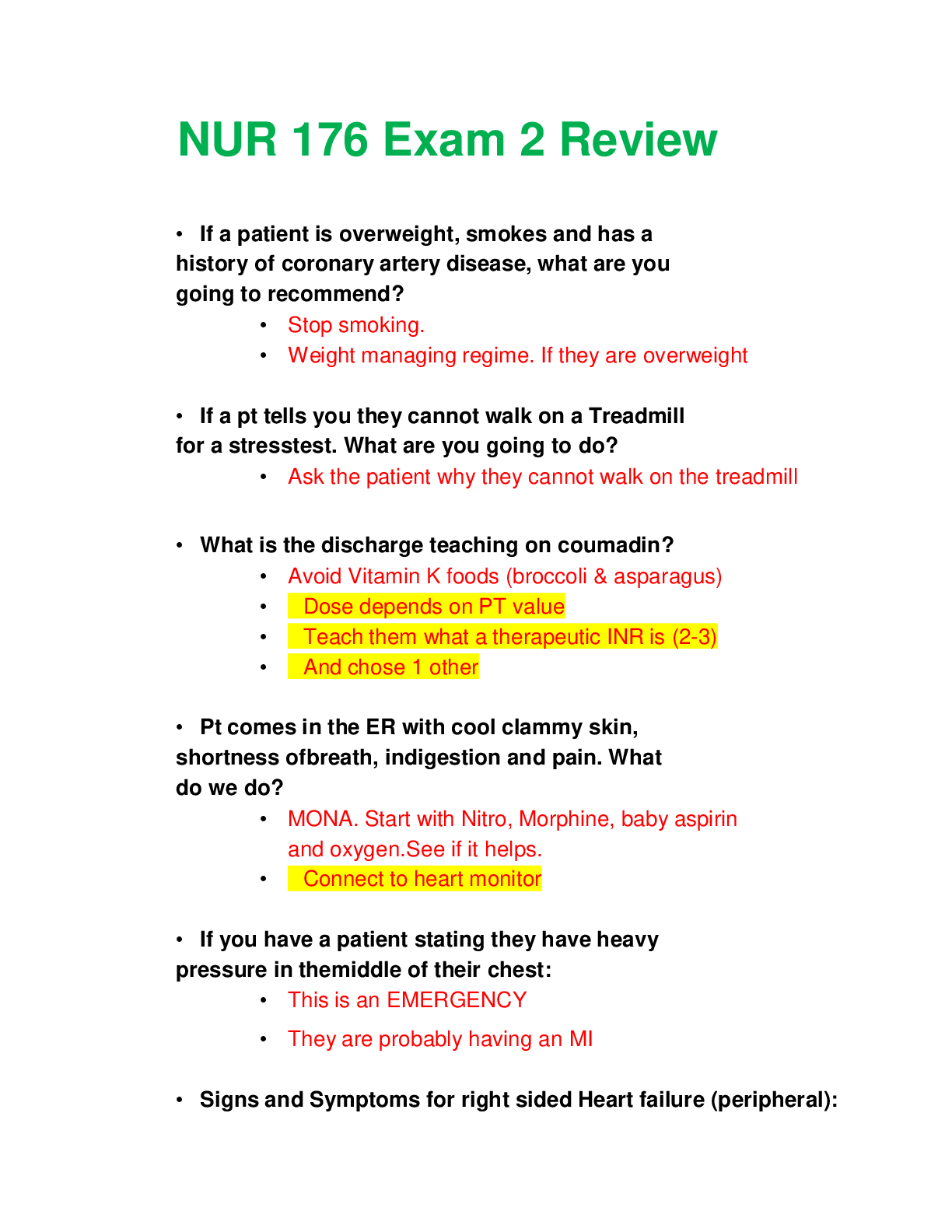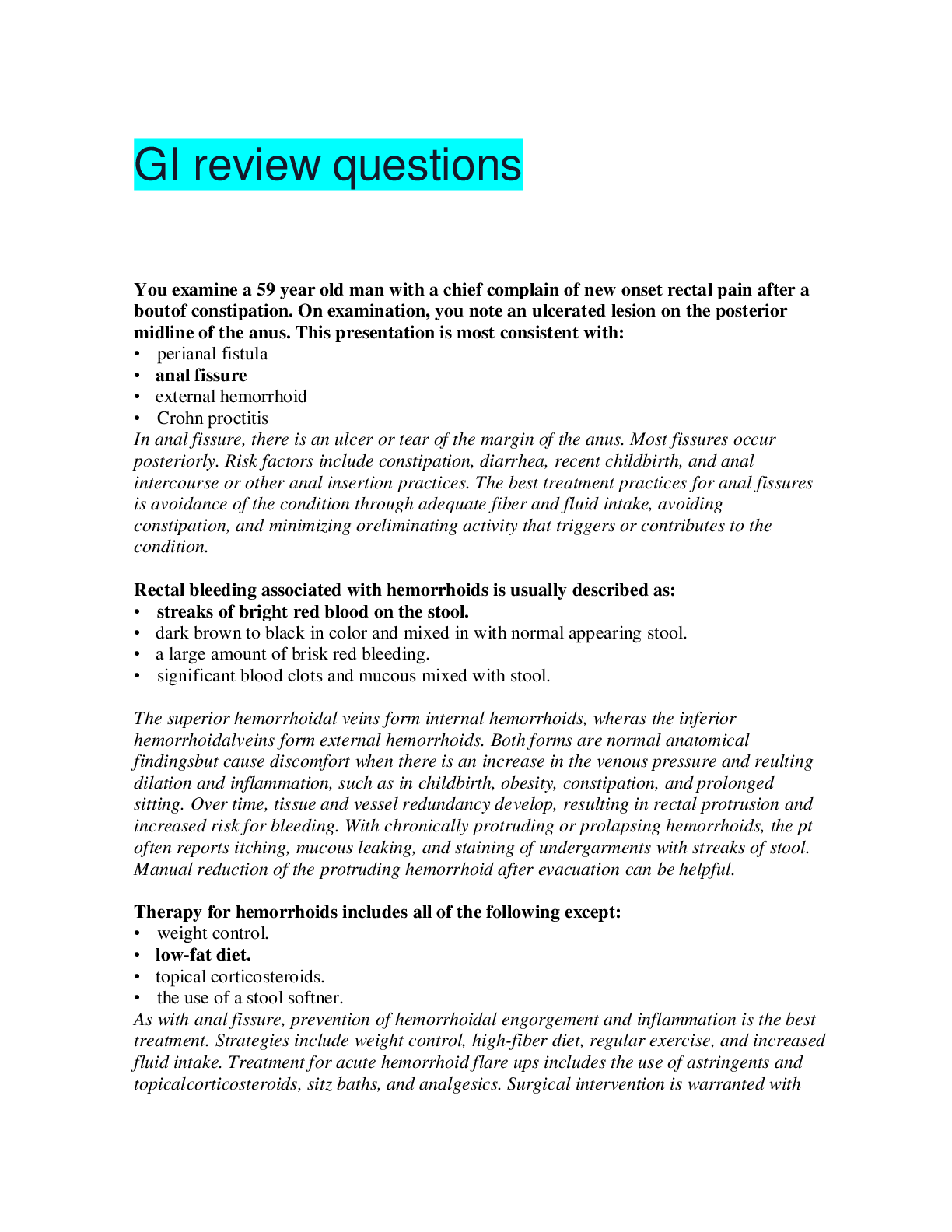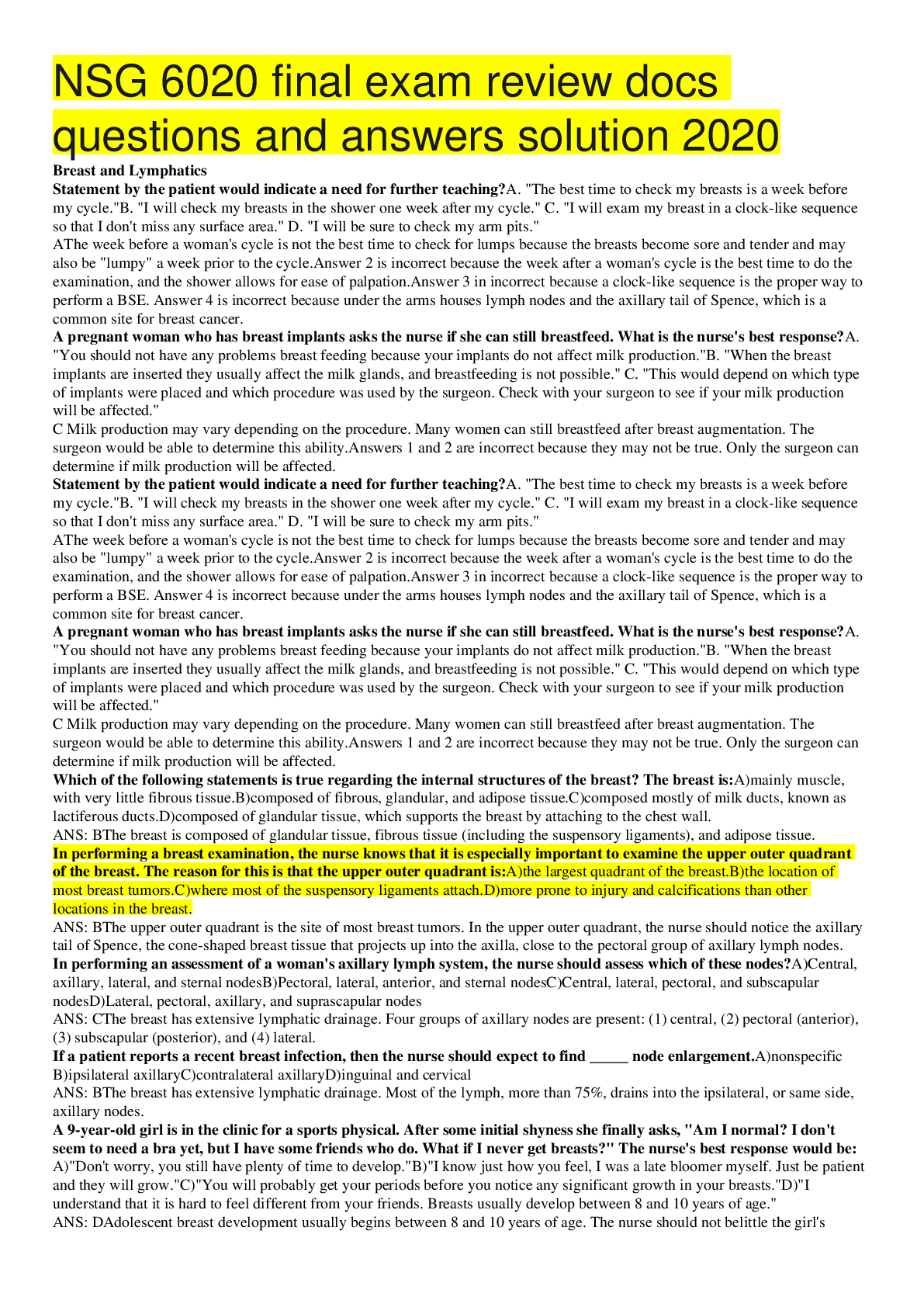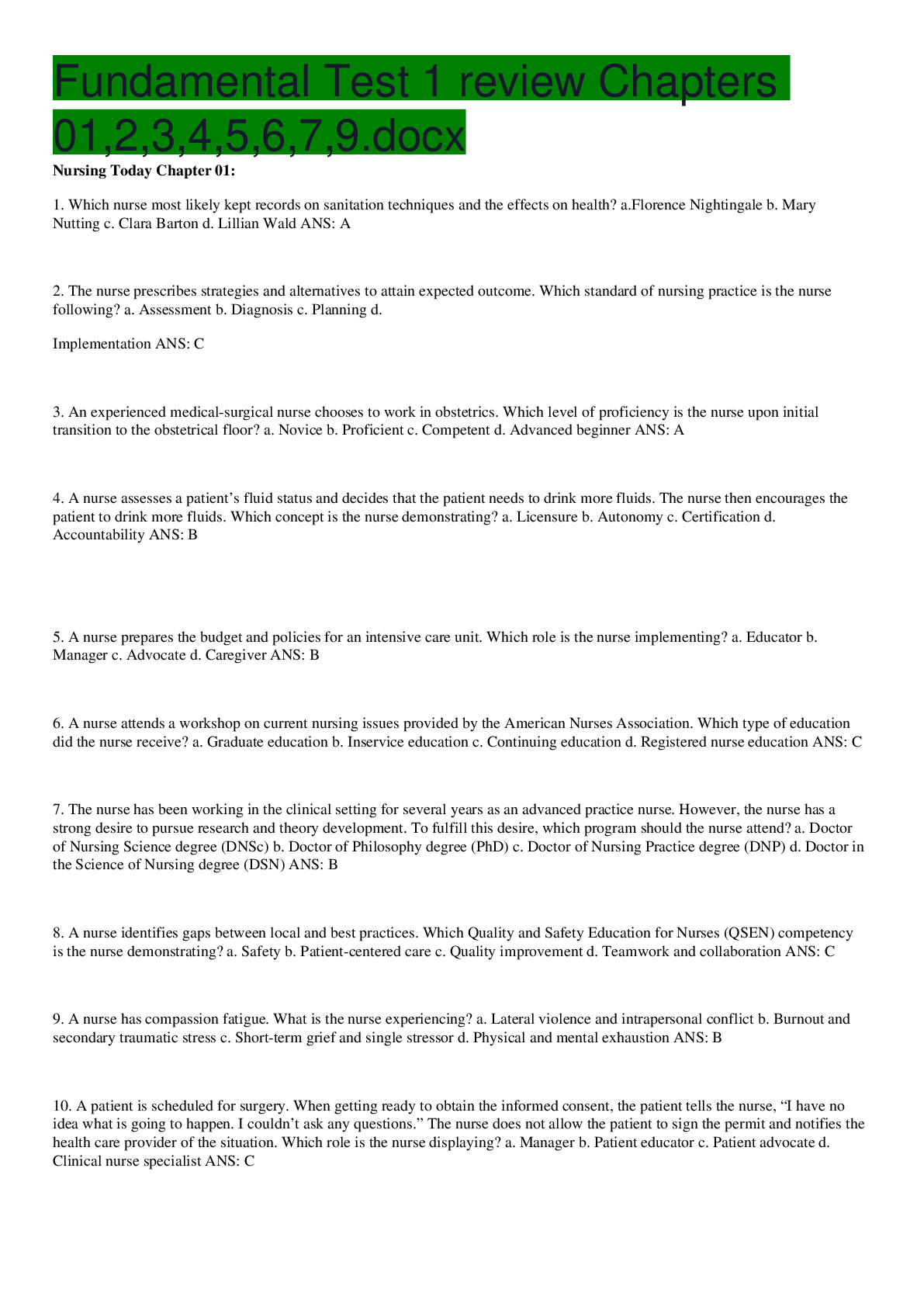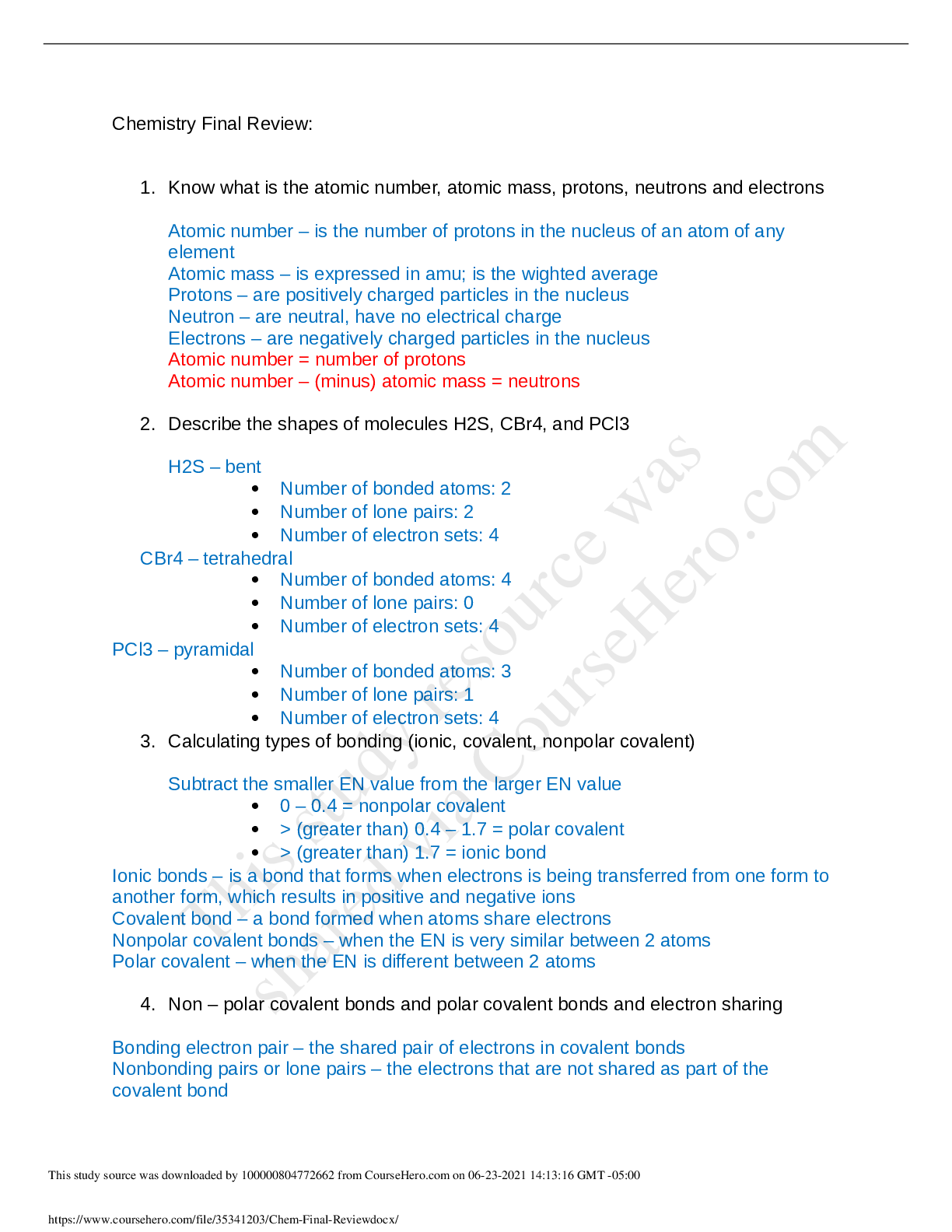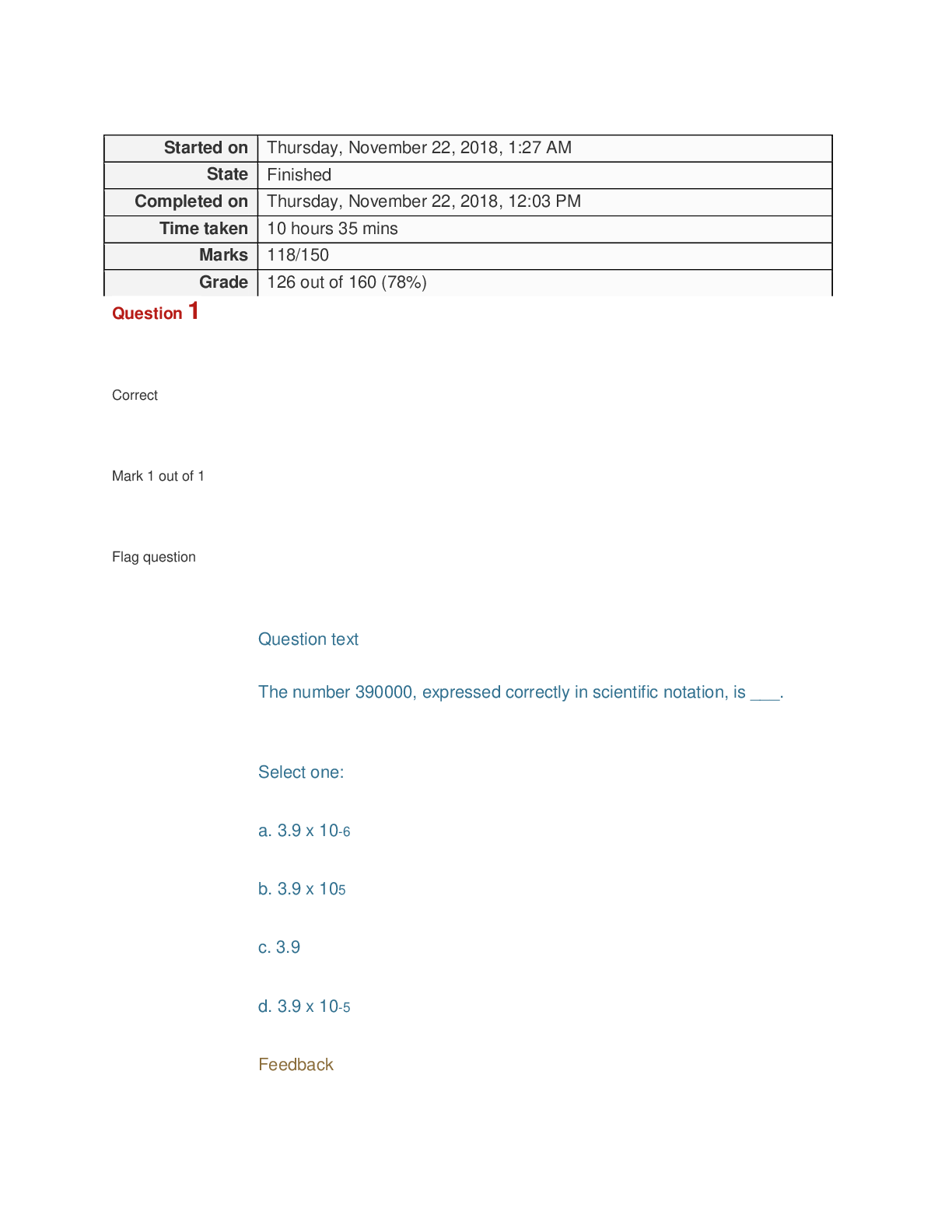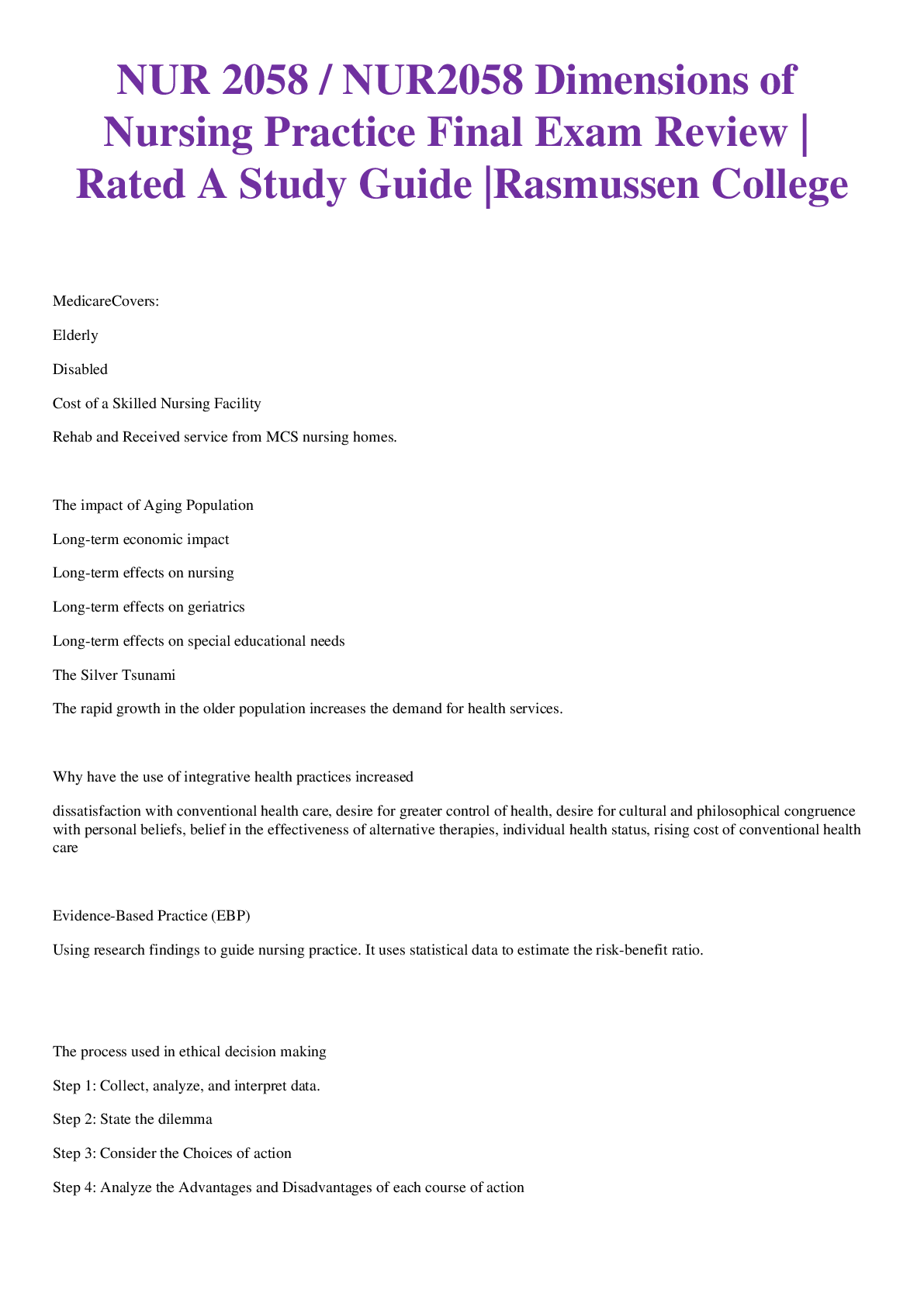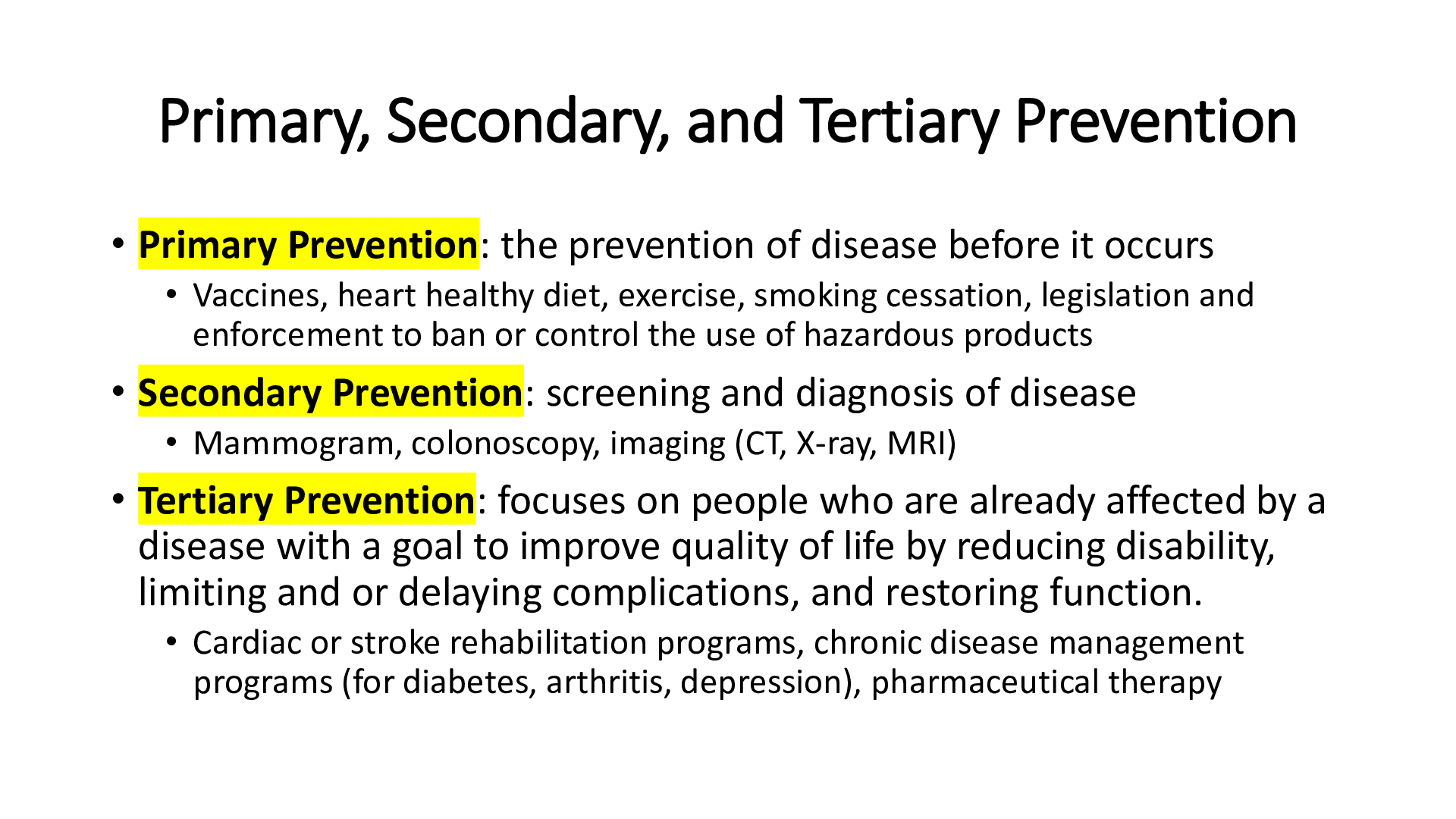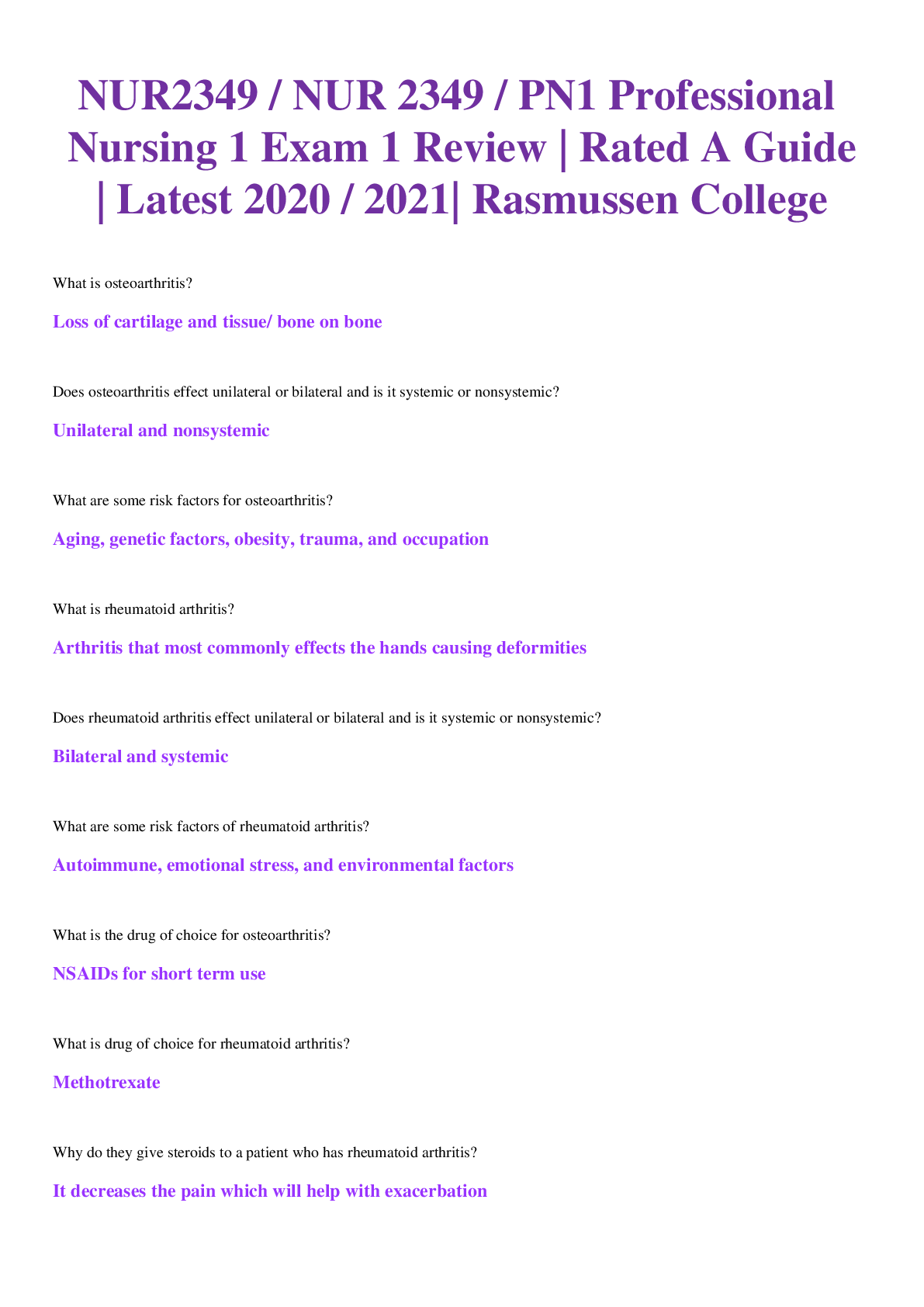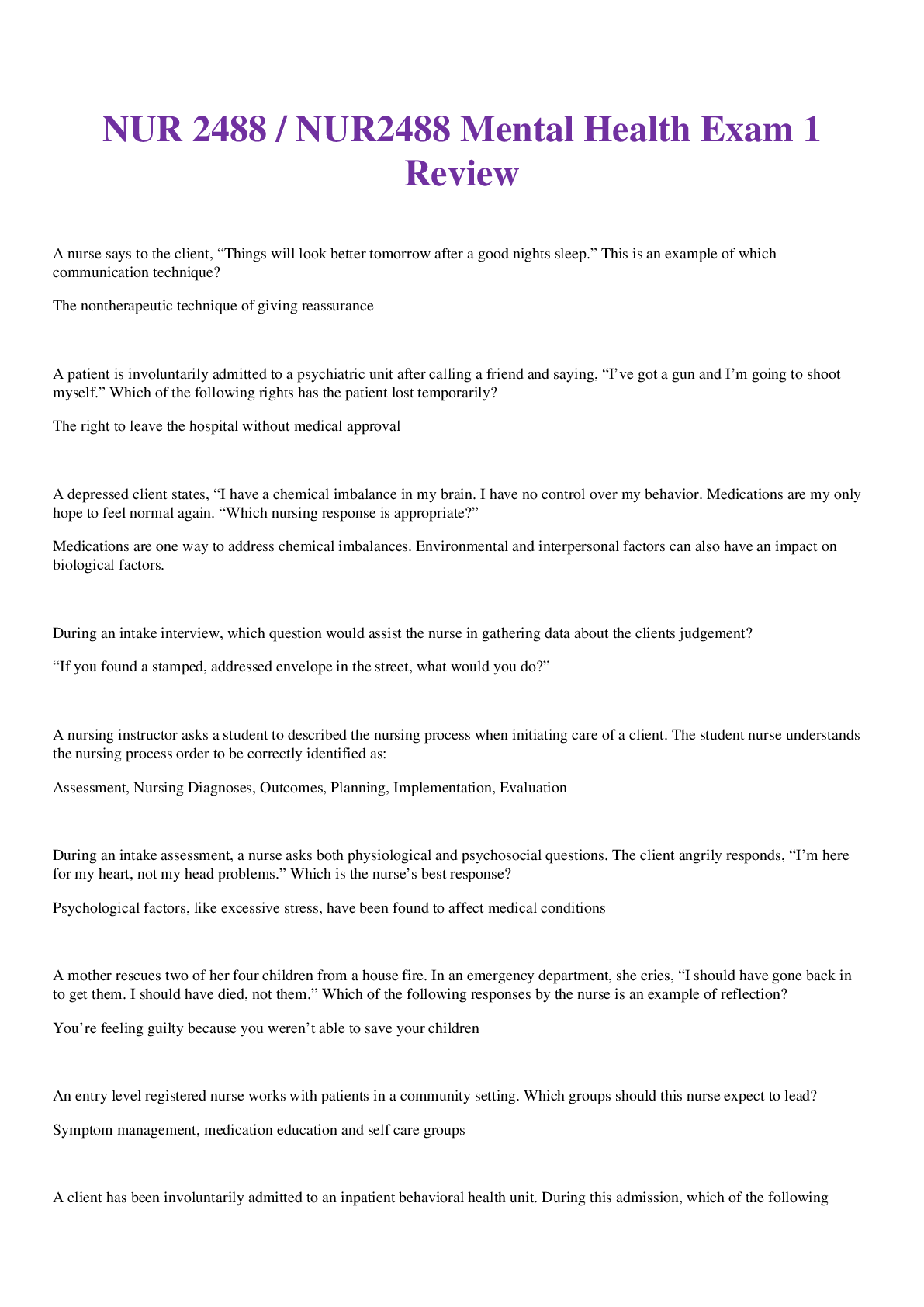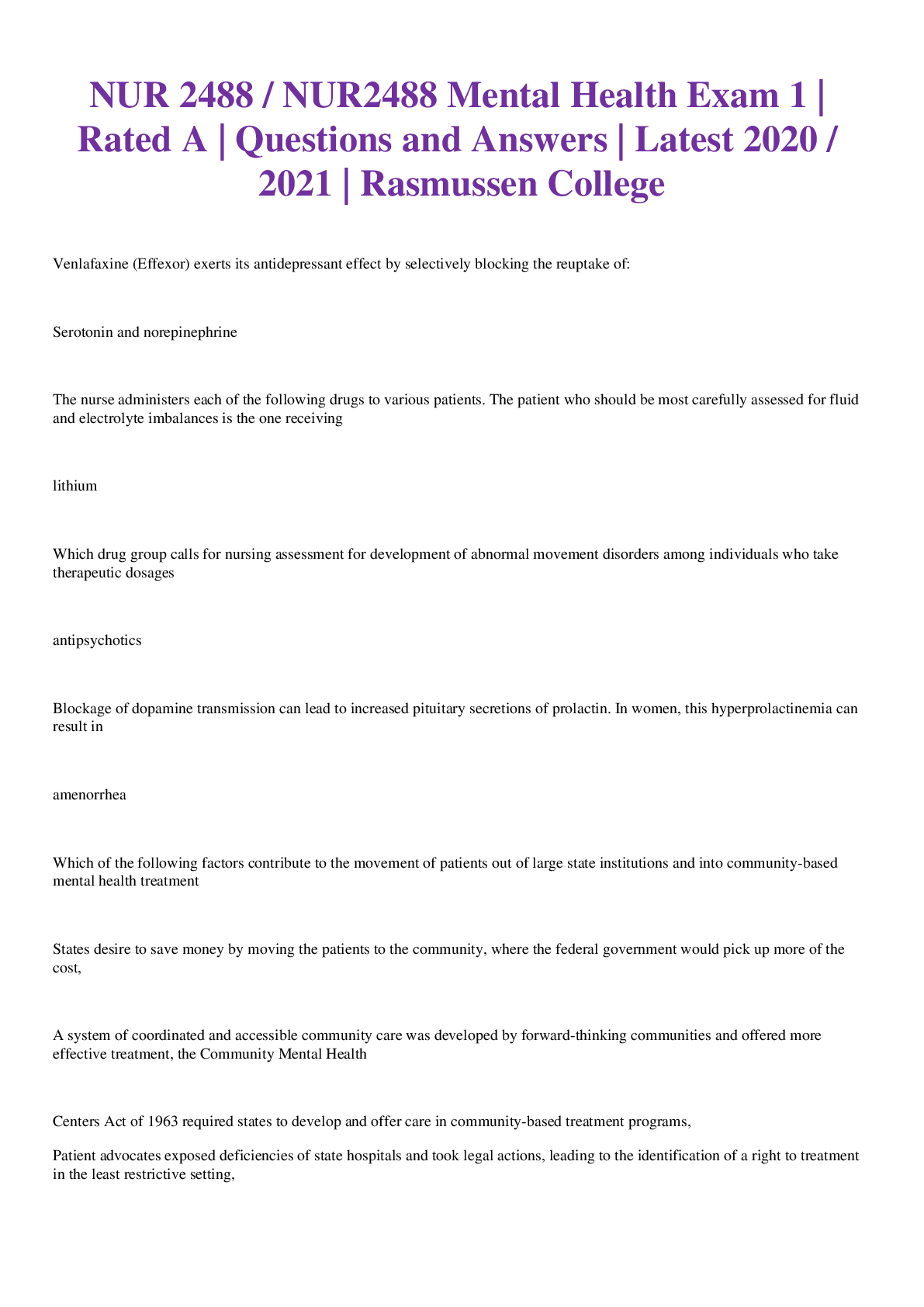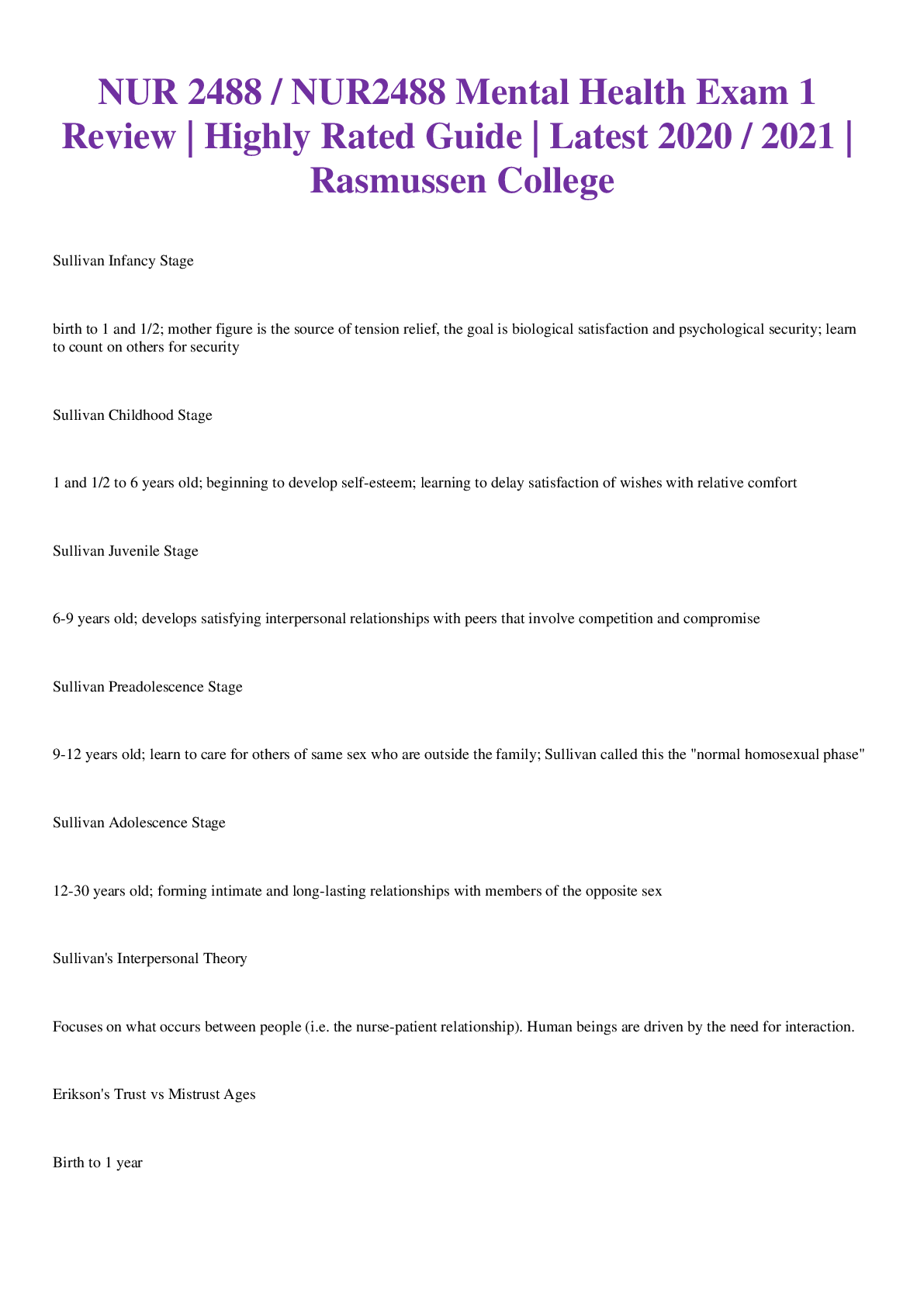Pathophysiology > EXAM REVIEW > PATHO 370 final exam study-guide (All)
PATHO 370 final exam study-guide
Document Content and Description Below
Homeostasis • Terminology: Iatrogenic, idiopathic, clinical manifestations, specificity, sensitivity, exacerbation, remission, Etiology and risk factors, etc • Stress response/GAS: Hormone functio... ns: catecholamine, and corticosteride and its general inhibiting effects on hormone systems (understand Figure 2-2, Table 2-2 and 2-3) • Cellular injury, aging and death • Cellular level: Reversible and irreversible injury • Tissue Level: • cellular adaptation: atrophy, hypertrophy, hyperplasia, metaplasia, dysplasia • Irreversible cell injury: necrosis (gangrene), apoptosis, and anaplasia • Hypoxia and ischemia: their difference and different cellular effects • Radiation: its mechanism to cause cell injury, and the fundamental mechanism why it can be used for cancer treatment • Cellular aging: definition and causes for aging Tumor • Terminology: Benigh and malignant as well as the differences between them; anaplasia, carcinoma, sarcoma, adenoma etc, • oncogene/pro- to-oncogene, the function and names of tumor suppressor genes and tumor associated virus • Tumor evaluation: (understanding) • grade, TNM, metastasis and invasion • Effect of Cancer on the body • Treatment options (mechanism of treatment, why they can treat cancer) Hematology • RBC and Anemia: • Different types of Anemia, micro, macro or normo-cytic, their causes, management and evaluation • Common manifestations of Anemia and the principles of evaluation of iron deficiency of anemia • Complications of polycythemia • Blood Clotting: (including disease management) • Blood clotting cascade, and vit K, Ca+ and liver associated bleeding (Why) • Interpretation of Different bleeding tests: BT, PT and aPTT, • Hemophilia A and B • vWD disease • Common manifestations of Thrombocytopenia • Immune defenses (including proper management) • Specific and non-specific immune defenses • Auto-immune and hypersensitivity types (typical examples in each type and type I management) • Common manifestations of leukopenia and neutropenia • Leukemia and Lymphoma: major differences and management of ALL, AML, CLL and CML • Hodgkins and non-hodgkin's lymphoma Cardiovascular system • BP: • Mechanism to control BP: short-term and long-term • Hypertension classification, prevention and treatment strategy • Obstruction: • Mechanisms for obstruction (Especially thrombus and embolus) • Acute occlusion • Atherosclerosis: pathogenesis and potential outcome/sequela • MI and heart attack, S/S, angina, biomarkers, EKG (general concept), diagnosis and management (MONA) • Heart failure: • Definition • compensatory mechanisms and effects [Show More]
Last updated: 1 year ago
Preview 1 out of 4 pages
Instant download
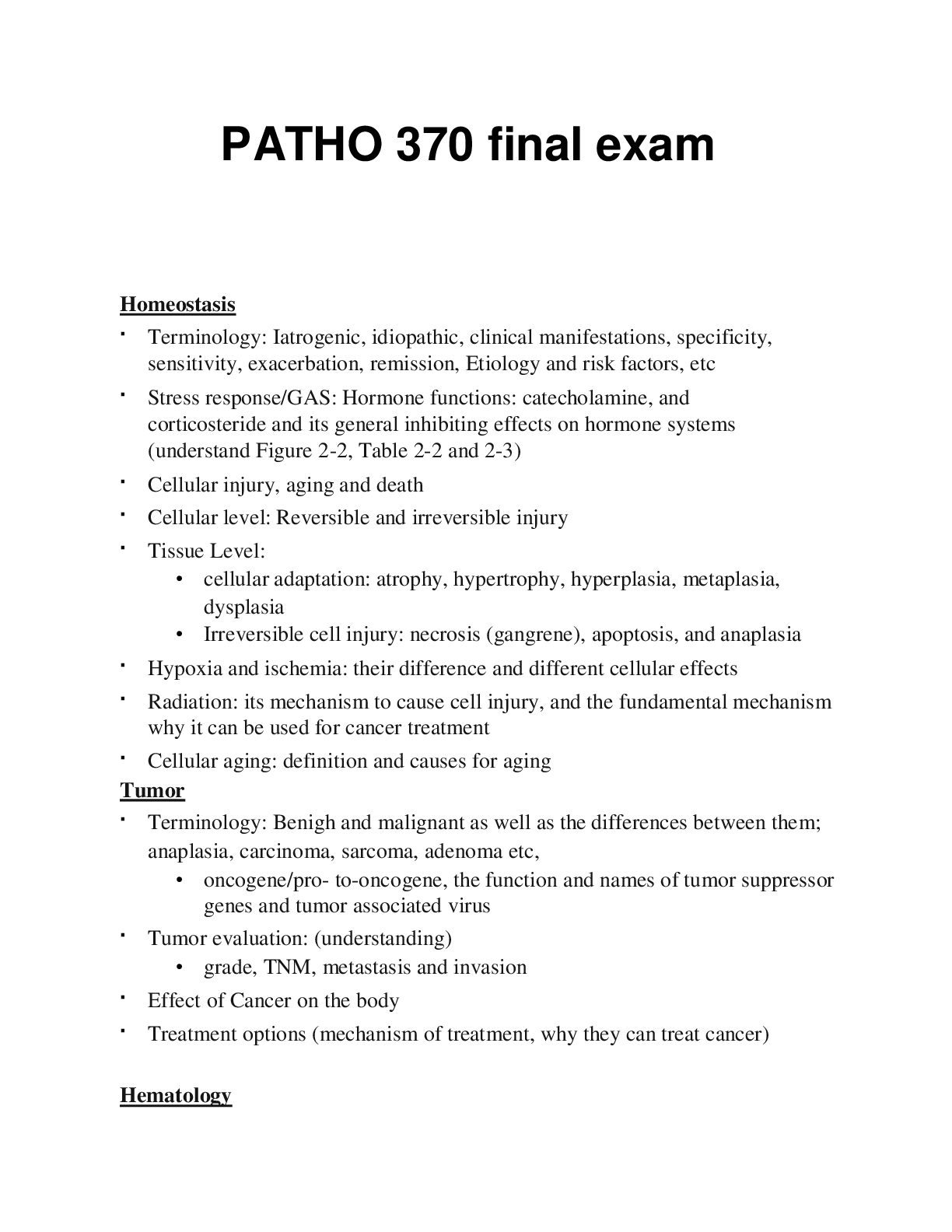
Instant download
Reviews( 0 )
Document information
Connected school, study & course
About the document
Uploaded On
Apr 08, 2021
Number of pages
4
Written in
Additional information
This document has been written for:
Uploaded
Apr 08, 2021
Downloads
0
Views
77

